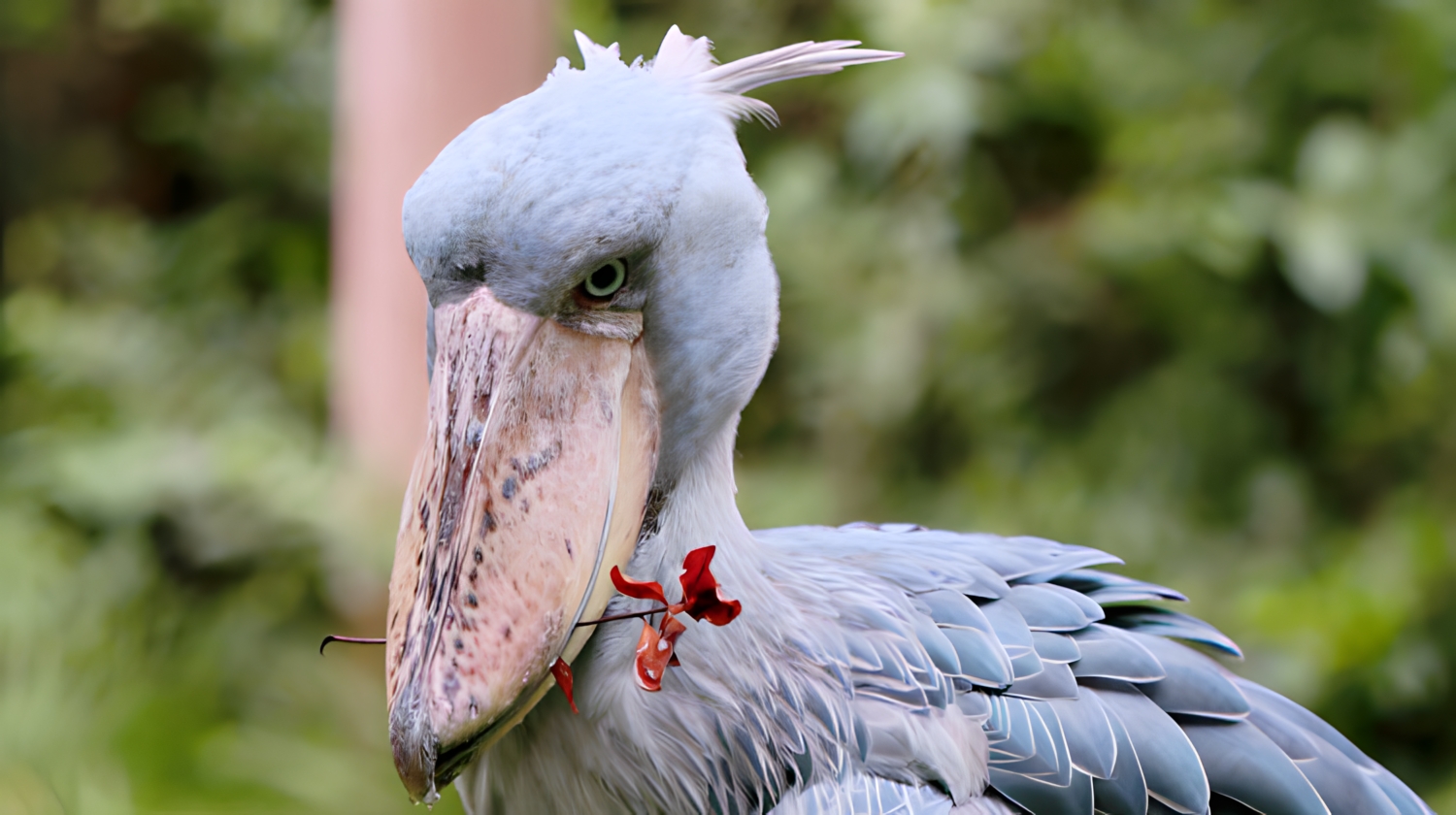In the diverse and mysterious continent of Africa, home to unique flora and fauna, the whale-headed stork stands out as a remarkable bird. This large bird, averaging a height of 1.2 meters and sometimes reaching up to 1.5 meters, is known for its distinctive appearance, characterized by mostly gray feathers, a greenish hue on the back in sunlight, and a crown-like hairstyle on the back of its head. Its tail is relatively short, and it boasts long legs similar to those of the red-crowned crane.
The most striking feature of the whale-headed stork is its enormous head and boot-like beak, earning it the title of “the largest living bird in the world” due to its big head. The bird’s face is amusing and vivid, with eyes positioned on top, similar to an owl’s. The beak, only 12 cm wide, is the world’s widest and is incredibly sharp, making it a formidable hunting weapon.
Despite its somewhat comical appearance, the whale-headed stork is a fearsome predator. Its sharp beak can penetrate the skin of a crocodile, and once it bites, the prey cannot escape. This bird is also known to consume turtles and lungfish.
The whale-headed stork’s popularity has grown over the years, often compared to “giant pandas” and “huskies” for its perceived clumsiness and cuteness. However, its endangerment is not due to its nature but rather human activities. Habitat destruction and pollution have led to a rapid decline in its numbers. Currently, there are only 3,000 to 5,000 of these birds in the wild, placing them on the list of vulnerable animals. Efforts are underway to protect this unique bird, with wildlife protection laws being introduced in many regions.













